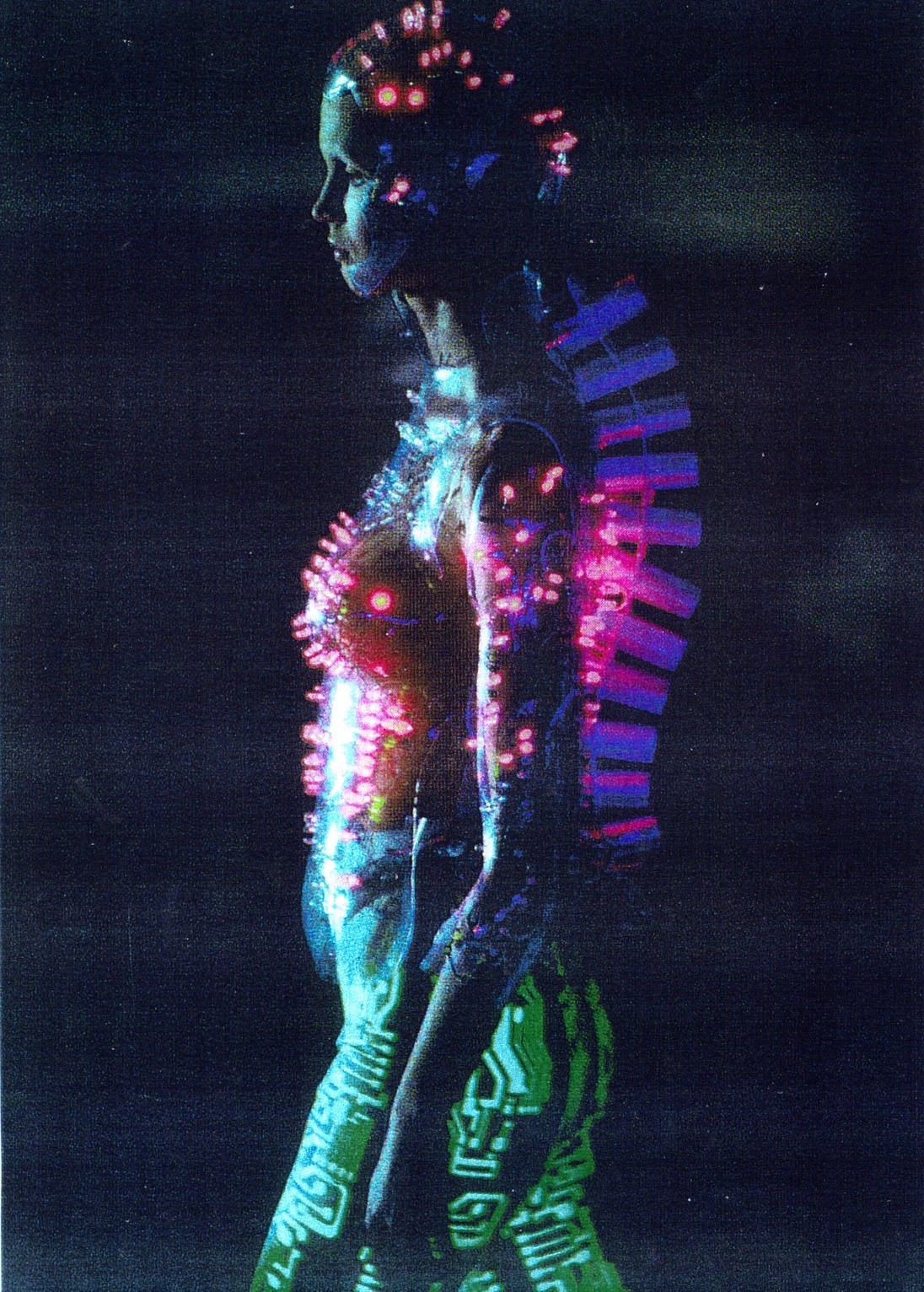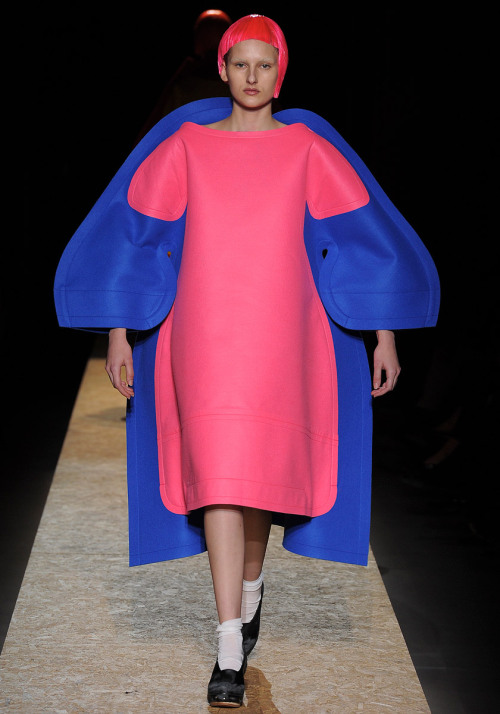One of the most intriguing things about fashion
is that it is a word with no real definition. A quick search in the Oxford
English Dictionary defines fashion as “a popular or latest style of clothing,
hair, decoration or behaviour” – an implication that it is something which is
transient as opposed to permanent. However, this is a definition which has been
skewed by endless pop-culture re-interpretations, ranging from fashion shows
through to fashion blogs. Google ‘fashion blog’ and the results vary wildly –
from teen girls modelling their latest Forever 21 ‘hauls’ to in-depth reviews
of ‘90s couture and essays on fashion history, these blogs often have little to
do with ‘fashion’s’ dictionary definition.
Then, on the other hand, there is the definition
of fashion in relation to art. Many believe that fashion is an art form – a belief
rooted in the idea that both fashion and art are visual representations of an
idea or a concept. A handful of high-brow individuals have expressed disdain at
this comparison, mainly due to the mainstream implication that fashion is
superficial and art is sacred. Designer Rei Kawakubo has spoken out on the
issue in the past, stating that (despite her work having been shown in
galleries and museums), “Fashion is not
art. The aims of fashion and art are different so there is no need to compare
them”. Many choose not to compare the two because fashion is made to be
worn and art is made to be seen – it is when fashion becomes unwearable that
the two worlds overlap.
It goes without saying that we assume clothes
are made to be worn. Clothes are seen as many things; they are seen as vehicles
of self-expression, as political statements and reactions to the social changes
which happen around us. They are seen primarily as garments, as opposed to
objects. However, throughout fashion history a host of avant-garde designers
have combined technology with an innovative mind to create pieces which
transcend the primary function of a garment. One of the best examples of this
comes courtesy of Turkish-born designer Hussein Chalayan, well-known for the
application of new technology in his design process. One of his career
highlights came courtesy of the ‘Aeroplane’ dress, originally modelled by
Audrey Marnay in his S/S 2000 ‘Echoform’ collection. Chalayan describes the piece
as a ‘monument’ as opposed to a garment, evident in the fact that the dress was
constructed from a fiberglass and resin composite which was formed into a
garment via a specially-constructed mould. In the runway presentation (although
some have described it more as an installation piece), two flaps in the dress
open via remote control, revealing layers of frothy pink tulle which lay
underneath – a commentary on the relationship between nature and technology.
 |
Another example of fashion which rebukes the
notion of utility was shown during Givenchy’s 1999 pret-à-porter collection – a
time in which the French fashion house was under the control of rebellious Brit
Alexander McQueen. The example in question was a Perspex robotic bodysuit which
was adorned with intricate patterns of wires, bulbs and LED lights. Long tubes
protruded from the back of the ‘garment’, creating an aggressive-looking
futuristic spinal cord. The bottom half of the bodysuit glowed in the dark (a
look which recurred in the futuristic collection) and the bodysuit itself was
created almost as a human circuit board, designed to blur the lines between
human and robot. Looking back at the collection, McQueen’s successor Sarah
Burton explained that the bodysuit would have electrocuted the model inside if
she began to sweat – McQueen’s exact quote was “if she sweats, she’ll electrocute herself. So don’t let her sweat."
A similar look was created by French couturier Thierry Mugler for one of his incredible Couture presentations, most of which would last upwards of 40 minutes. Nadja Auermann was the Amazonian Swede chosen to model the ‘Robot Suit’ – she originally entered the runway dressed in a floor-length black dress coat with only her face exposed and partly covered by what appeared to be a latex mask. As she slowly undressed, she revealed a full silver bodysuit which made her look more android than female – only the cut-out breasts and buttocks allowed any glimpse of the female beneath. Speaking after the show, she recalled that she had to be sewn into the suit which almost blocked her circulation completely. She described this as an example of one of fashion’s extremes, explaining that she shared Mugler’s ideology of “if you wear a look, you go all the way”. Mugler’s superhuman aesthetic often resulted in garments which were totally unwearable and designed only with the spectacle of couture in mind – many of the pieces went on to be photographed in editorials, but were most likely bought by collectors as opposed to worn on the high street.
On the other side of the spectrum are the designers which design clothes as sculpture – namely, Kawakubo herself. Even as recently as her S/S 2014 collection, Kawakubo has stated her intention to constantly create something new, which she says can only be achieved by “not setting out to design clothes”. The pieces on show were arguably the most unwearable of her career, exaggerating proportions and creating sturdy sartorial sculptures. From black cylindrical ‘dresses’ through to stiff cocoon shapes and carved footwear, there was nothing here which resembled the established definition of ‘fashion’. Comme des Garçons is a brand known for eschewing trends – in 2012, Kawakubo sought to create a collection of 2-D dresses, whereas back in 1997 she deformed the female silhouette by adding clumps of padding in random areas to create the infamous ‘Bump’ dresses. Thom Brown recently mimicked the 2-D technique with his A/W 2014 menswear collection, showing grossly-exaggerated silhouettes which resembled sculptures, not clothing.
All in all, it is impossible to define fashion as something which should be wearable, trend-dictated or even profitable. The more commercial designers will always be the ones which permeate the mainstream, but there is always a more creative, avant-garde side to fashion which truly pushes boundaries and results in collections which transcend the boundaries of wearability. It is ironic that Kawakubo is one of the only designers to flatly state that there are no similarities between fashion and art – her background in art and literature and close links with the artistic world mean that she is at the forefront of the designers which are helping to redefine the way in which we see clothing today. When we couple this with the technological background of designers such as Chalayan (who recently showed his first collection as creative director of Vionnet couture) and the ambition of designers such as Thom Browne, it becomes clear that fashion, unlike Kawakubo’s designs, will never be two-dimensional.
A similar look was created by French couturier Thierry Mugler for one of his incredible Couture presentations, most of which would last upwards of 40 minutes. Nadja Auermann was the Amazonian Swede chosen to model the ‘Robot Suit’ – she originally entered the runway dressed in a floor-length black dress coat with only her face exposed and partly covered by what appeared to be a latex mask. As she slowly undressed, she revealed a full silver bodysuit which made her look more android than female – only the cut-out breasts and buttocks allowed any glimpse of the female beneath. Speaking after the show, she recalled that she had to be sewn into the suit which almost blocked her circulation completely. She described this as an example of one of fashion’s extremes, explaining that she shared Mugler’s ideology of “if you wear a look, you go all the way”. Mugler’s superhuman aesthetic often resulted in garments which were totally unwearable and designed only with the spectacle of couture in mind – many of the pieces went on to be photographed in editorials, but were most likely bought by collectors as opposed to worn on the high street.
On the other side of the spectrum are the designers which design clothes as sculpture – namely, Kawakubo herself. Even as recently as her S/S 2014 collection, Kawakubo has stated her intention to constantly create something new, which she says can only be achieved by “not setting out to design clothes”. The pieces on show were arguably the most unwearable of her career, exaggerating proportions and creating sturdy sartorial sculptures. From black cylindrical ‘dresses’ through to stiff cocoon shapes and carved footwear, there was nothing here which resembled the established definition of ‘fashion’. Comme des Garçons is a brand known for eschewing trends – in 2012, Kawakubo sought to create a collection of 2-D dresses, whereas back in 1997 she deformed the female silhouette by adding clumps of padding in random areas to create the infamous ‘Bump’ dresses. Thom Brown recently mimicked the 2-D technique with his A/W 2014 menswear collection, showing grossly-exaggerated silhouettes which resembled sculptures, not clothing.
All in all, it is impossible to define fashion as something which should be wearable, trend-dictated or even profitable. The more commercial designers will always be the ones which permeate the mainstream, but there is always a more creative, avant-garde side to fashion which truly pushes boundaries and results in collections which transcend the boundaries of wearability. It is ironic that Kawakubo is one of the only designers to flatly state that there are no similarities between fashion and art – her background in art and literature and close links with the artistic world mean that she is at the forefront of the designers which are helping to redefine the way in which we see clothing today. When we couple this with the technological background of designers such as Chalayan (who recently showed his first collection as creative director of Vionnet couture) and the ambition of designers such as Thom Browne, it becomes clear that fashion, unlike Kawakubo’s designs, will never be two-dimensional.




This is my first time visit to your blog and I am very interested in the articles that you serve. Provide enough knowledge for me. Thank you for sharing useful and don't forget, keep sharing useful info: aesthetic clothes
ReplyDelete